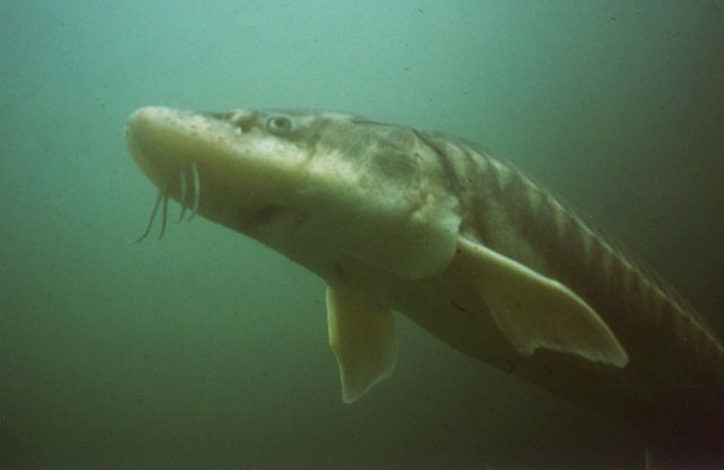Fish of the Acipenser genus of the Acipenseridae family of the Acipenseriformes order of the Chondrostei subclass.

(Adriatic sturgeon. Photo by © Drow male. wikipedia.org)
Adriatic sturgeon (Acipenser naccarii) was first described in 1836 by the French biologist and ornithologist Charles Lucien Bonaparte (1803 – 1857). It is a diadromous fish. In the sea, it sticks to the pre-mouth areas of large rivers, usually 10-40 meters deep. In the rivers, it lives in deep areas with a muddy and sandy bottom. The recorded maximum length is 200 cm. The maximum weight is 25 kilograms. It feeds on bottom invertebrates and small fishes.

(Adriatic sturgeon. Photo by © Riccardo Andreoli. fishbase.org)
It used to be a common species in the basin of the Adriatic Sea. Nowadays, it is extremely rarely found and, perhaps, it is almost extinct. Attempts to restore the population are being made. Single encounters have been recorded in the Po River (Italy) and its tributaries (Ticino, Adda, Oglio, Mincio), as well as in the Adige, Livenza, Piave, Tagliamento Rivers. The last encounter with the Adriatic sturgeon at the mouth of the Bojana (Buna), the river that flows along the border between Montenegro and Albania, was recorded in 1997.
It is listed in the IUCN Red List as a species remaining in critical condition (CR).
Names of Adriatic sturgeon (Acipenser naccarii) in other languages are as follows:
Blini i Drinit (Albanian), Jeseter jadranský (Czech), Adriatische steur (Dutch), Esturgeon de l’Adriatique (French), Adriatischer Stör (German), Οξύρρυγχος της Αδριατικής (Oxyrrinhos tis Adriatikis) (Greek), Adriai tok (Hungarian), Storione cobice (Italian), Jesiotr adriatycki (Polish), Адриатический осётр (Adriaticheskij osjotr) (Russian), Jadranska jesetra, Jesetra tuponoska (Serbian, Croatian), Jadranski jeseter, Toponosi jeseter (Slovenian), Esturión del Adriático (Spanish).